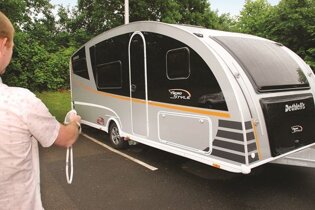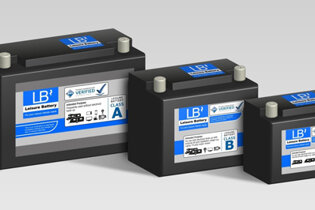Power stations are great because they're quieter and don't release exhaust fumes, unlike traditional petrol or diesel combustion-powered generators. You can also recharge Portable Power Stations from a mains hook-up or solar panel, allowing you to go off-grid with creature comforts.

Some would argue that portable power stations are superfluous for a camping trip; after all, isn't a large part of camping about disconnecting from the trappings of modern life? There is some truth to this. However, there is no one way to camp, and with the evolution of technology, you can camp more comfortably than ever before.
Here are just a few applications for your portable power station:
- Generate electricity for your camp lights.
- Run a small fridge/freezer = no more hunting down ice.
- Keep the kids entertained with a movie when nature won't do.
- Remote workers can run their laptops and hotspots = truly remote workers.
- Power a CPAP machine to address your sleep apnea = great sleep anywhere.
Important Considerations

Portable power stations come in all shapes and sizes and have varying power outputs. The endless choices and dense product information can feel overwhelming, especially if you're new to this burgeoning world.
To make your life easier, here is a short list of 5 key features that we recommend you pay attention to when selecting a portable power station:
- Power Output
How much energy a battery can produce, typically displayed in Watts (W) - Surge Power
The peak power or inrush current is the maximum power a device or electrical appliance draws when starting up or during a sudden increase in demand. - Capacity
The amount of energy that a battery can store is displayed in Watt hours (Wh)
A 600Wh Capacity can typically run a 50W appliance for around 10 hours. - Recharge Time
How long it takes for a fully discharged battery cell to be fully charged. - Number of Outputs
The amount of three-pin sockets and USB plug-ins. The more, the merrier. - Life Cycle
The number of times a battery can completely discharge and recharge before performance decreases.
Typically quoted in the number of cycles until your power station contains 80% of the original capacity out of the box, even though it will say it is 100% recharged.
Lastly, portability is one of the most important factors when choosing a power station for camping. Size and weight are significant considerations if you routinely pull out your power station at a campsite. Conversely, portability may not matter if you plan to leave your power unit in your vehicle.
Keep in mind that there is no one-size-fits-all. Start by defining your needs and applications, and your best options will become apparent quickly.
Glossary

The five key features above will go a long way in helping you determine the best power station for your needs. That said, you’ll want to know the terms below to understand better what you’re buying.
- Maximum Power Point Tracker (MPPT) vs Pulse Width Modulation Controller (PWM)
- Both help preserve the life of your battery by preventing overcharging and excessive battery drain.
- MPPTs are more efficient but more expensive than PWMs.
- Battery Management System (BMS)
- Used in Lithium-Ion batteries to control the charging and discharging process. Additionally, it monitors your voltage, current, and temperature.
- Alternating Current (AC):
- Electricity that comes out of your wall socket - Usually used for anything with a three-pin plug.
- 12v Direct Current (DC):
- Electricity from the Car Outlet or cigarette lighter socket in your car.
3 Best Portable Power Stations
Bigger Considerations
The above options will serve most people well for camping and outdoor applications. But some need more juice for longer periods of time. If you're in the latter camp, here are three beefier power stations to consider.

EcoFlow DELTA Pro Portable Power Station
The EcoFlow DELTA Pro Portable Power Station is getting close to leaving the realm of portability. 30kg is manageable, but you'll be grateful for the built-in wheels when you need to move your base of operation.
With an immense capacity of 3,600W, you can run a fridge for up to two days or an electric drill for three hours. You can also chain two units together for a whopping 7,200W output.
The EcoFlow DELTA Pro also boasts an impressive recharge of 1.8 hours from the wall outlet, which is handy when you're short on time. The ability to charge up to 15 devices at once is excessive for most people. Still, families and tech-centric folks may consider this model for both home and camper.

BLUETTI EP500Pro Power Station
The BLUETTI EP500 Pro is an 83 kg monster with a 5,100Wh capacity. The four sets of wheels allow the power station to be movable. Still, it can't be considered a truly portable option.
What truly separates the EP500 Pro from the rest is the Uninterruptible Power Supply (UPS). A UPS turns on automatically and provides immediate energy from batteries or other sources when the power goes out. Remote workers and those needing to keep medicine cold can relax knowing they've got backup.
Conclusion
As you can see, there is no one-size-fits-all. Everyone's needs and applications are different, and it's up to you to decide what's important. Luckily, with so many options, there's never been a better time to shop for a portable power station.
Thanks to our friends at Outdoor Roadie, who helped with the technical details for this article. You can shop a range of products on their website: outdoorroadie.co.uk







